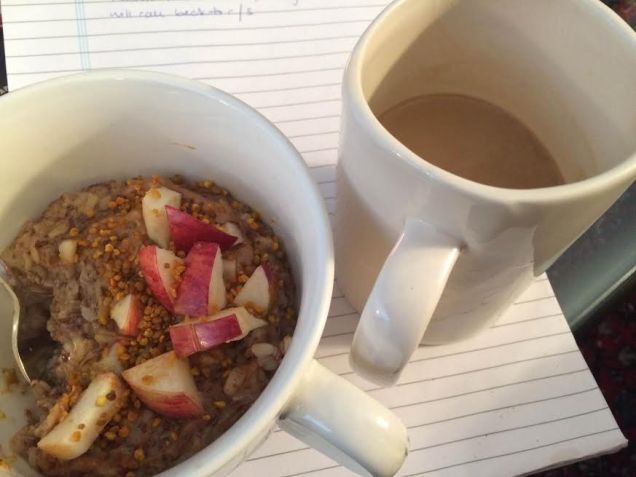I’ve been using some new techniques in my food preparation lately.
For some time I have been hearing and reading about the many health benefits of soaking & sprouting seeds, grains, and legumes. I had ignored the knowledge since for a good amount of time, I was incorporating very little to no grain in my diet. I was experimenting with getting my carbohydrate primarily from fruits and vegetables. Nuts and seeds usually make their way into my day, whether they are soaked/sprouted or not, as did legumes.
Usually I’m nibbling on hemp/flax/brazil nuts and those don’t need soaking or sprouting. Even though I understand the importance of the preparation, I find myself scooping up roasted almond and sunflower butter and organic peanut butter and I’m totally okay with that. Despite my laid back approach to this, I am perking up to the benefits of putting in the minimal effort of properly preparing nuts/seeds, grains, and legumes.
The benefits of this technique can be summed up as follows:
–better for digestion
–greater bio availability of nutrients (soaking washes away the phytic acids, which are the compounds that are meant to protect the plant. When removed we gain more access to the benefits of eating that grain/nut/seed/legume.) My thought here is if you’re going to spend money on quality nuts and seeds, you might as well try to get the most out of them!
–sprouting increases the enzyme content, increasing the nutrition, turning a seemingly lifeless food into one brimming with phytonutrients and life (I do this from time to time with buckwheat or chick peas, or almonds when making almond milk)
Too much phytic acid from eating un-soaked grains and nuts is not an ideal situation. The phytic acid molecule readily binds to minerals (such as calcium, magnesium, iron and zinc) and inhibits the enzymes that we need to digest our food.
If this is interesting to you, read more here!
SO, what we want to do is neutralize the phytic acid in these foods as much as possible. Fortunately for us, this is super easy!
All you need to do is soak the given nut/seed/grain/legume in water and a touch of an acidic medium (fresh lemon juice or apple cider vinegar) for at LEAST one hour or up to overnight. The following day or hours later, simply rinse through a colander (make sure you have a sieve with small enough holes for things like amaranth and teff) and proceed to cook as you would normally.
If you’re in a pinch, at least rinse your grain before you cook it!
It’s not a glamorous new trick, but I love reconnecting to the traditional ways of preparing food. I decided to add more grains and beans into my diet because I have observed that I usually feel well eating these foods and alot of animal protein in my diet doesn’t jive well with my system. I also feel that incorporating grains and beans into a few meals throughout the week is a sustainable way of eating (in regards to both the environment and your wallet).
Here are some white northern beans soaking and some rolled oats (both in just water and about 1 tsp ACV)
Breakfast this morning: whole oat groats (so chewy and satisfying, and it doesn’t get more unprocessed than this) cooked with water, cinnamon, sea salt, birch sugar, coconut oil. Topped with apple & bee pollen.
Try this with any of your whole grains and dried beans at home. They taste WORLDS better too and I can feel the difference in my digestion when I properly prepare them (my stomach no longer gurgles in protest when I eat oats and beans feel like they give me a whole new layer of nourishment when I consume them) That’s the point here-let’s figure out how we can utilize food in a way that nourishes rather than depletes the body!
Other tricks to enhance your grains and legumes (that I learned from the wise Terry Walters at The Institute for Sustainable Nutrition).
-cook your soaked and rinsed grain with dried mushrooms in the stock/water for extra savory, earthy flavor
-add a cinnamon stick (or other whole herbs) into your grain’s cooking water to infuse it with that aroma and taste
-add a strip of kombu (sea vegetable) to add extra minerals back into the legume or grain (this contributes umami flavor). This also neutralizes the acidity of the grain. Our soil is much depleted and any opportunity we have to add minerals into our food is one to jump on!

